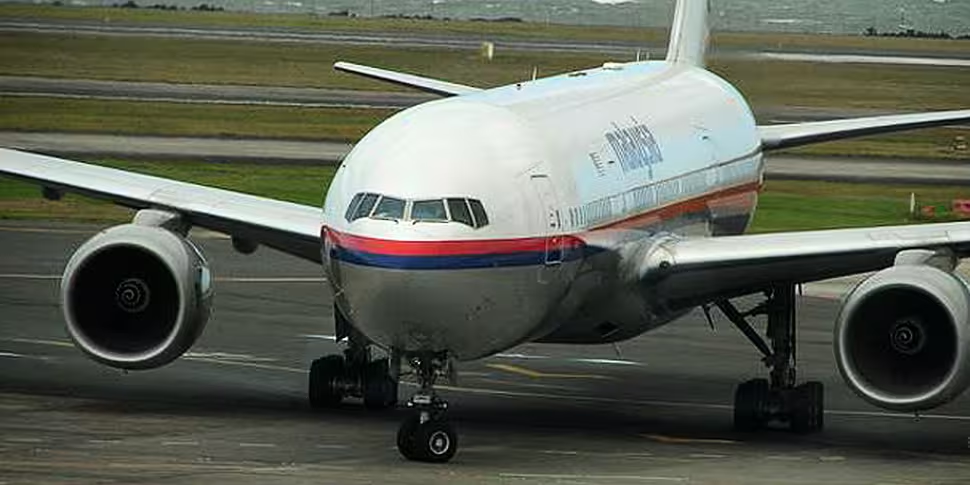The search for the missing Malaysia Airlines plane has been expanded to two areas, five days after the Beijing-bound flight disappeared without a trace.
Speaking at a news conference in Kuala Lumpur on Wednesday, Malaysian Transport Minister Hishammudin Hussein said the search had been extended to cover the South China Sea and Strait of Malacca.
He added 12 countries were now involved in the search, with 42 ships and 39 planes deployed to cover 27,000 square nautical miles - an area roughly the size of Hungary.
He said "My heart reaches out to the families of the passengers and crew and I give you my assurance that we will not reduce the tempo and that we will not spare any effort to find the missing plane. Each day that passes I fear that the search and rescue becomes just a search, but we never give up hope".
Malaysia's air force chief said military radar detected what could have been the airliner in an area in the north of the Strait of Malacca at around 2:15am local time - 45 minutes after the plane vanished from air traffic control screens.
Rodzali Daud said the radar tracking point was 200 miles northwest of Penang island on Malaysia's west coast, but that the detection had not been corroborated.
A senior Malaysia Airlines executive said on Wednesday there was "no reason to believe" the crew had caused the disappearance of the plane.
Hugh Dunleavy, commercial director of the company, said: "We have no reason to believe that there was anything, any actions, internally by the crew that caused the disappearance of this aircraft."
Photographs of the two pilots, Fariq Abdul Hamid and Zaharie Ahmad Shah, have now emerged.
Malaysia Airlines is investigating a report that Mr. Hamid had invited two women to stay in the cockpit for the duration of a trip two years ago.
Jonti Roos told Australia's Channel Nine that Mr. Hamid and the other pilot talked to her and her friend, and smoked and posed for photos during the flight. The second pilot was not identified.
The flight is said to have gone hundreds of miles off its course when last seen
It comes after Vietnam suspended search and rescue operations for the aircraft, which vanished between Kuala Lumpur and the Chinese capital.
Meanwhile, CIA director John Brennan has said there had been "some claims of responsibility" over the missing jet that had "not been confirmed or corroborated," and that he could not exclude the possibility of a terror link.
There were a host of unanswered questions including why the plane's transponder stopped emitting signals and what was the role of passengers carrying stolen passports, Mr. Brennan said.
But officials say the two men who boarded the flight using stolen European passports appear to have been young Iranian migrants seeking a new life overseas.
Interpol confirmed the identities of the two men, and based on growing information, Interpol Secretary General Ronald Noble said he was "inclined to conclude" the plane's disappearance was not the result of a terror attack.
One of the men, Pouria Nourmohammadi (18), who was travelling on a stolen Austrian passport was thought to be an asylum seeker trying to reach Germany.
The other man named as Seyed Mohammed Reza Delavar (29) was using an Italian passport. Iran offered its assistance with the Malaysian investigation into two of its nationals.
Personal or psychological issues investigation
Police also said they were investigating whether any passengers or crew had "personal or psychological problems" as a possible cause of the aircraft's disappearance, along with hijacking, sabotage, or mechanical failure.
Investigators are baffled by the lack of any wreckage and cannot understand why the black box flight recorders, which are designed to transmit signals on contact with water, are not transmitting a signal.
Coastguards from India's remote Andaman and Nicobar islands joined the search on Wednesday. A US satellite imaging company is getting public help to scour high-resolution images to try and track down the missing plane.
DigitalGlobe, based in Longmont, Colorado, took images from its five satellites and has put them on a public website, Tomnod. Users can then search through the images, tagging anything they think looks suspicious, which can then be followed up by satellite imaging experts.
David Learmount is an aviation safety expert with Flightglobal, and he believes there is more information to come from Malaysian authorities. He told the Pat Kenny Show here on Newstalk there are similarities with Air France flight 447, that dived into the Atlantic Ocean in 2009 killing 228 people.
He says records of the flight path of the plane after the transponder was switched off are crucial.
Tania Branigan is China correspondent for The Guardian. She told Newstalk Breakfast earlier that authorities are being criticised for their lack of clarity.










